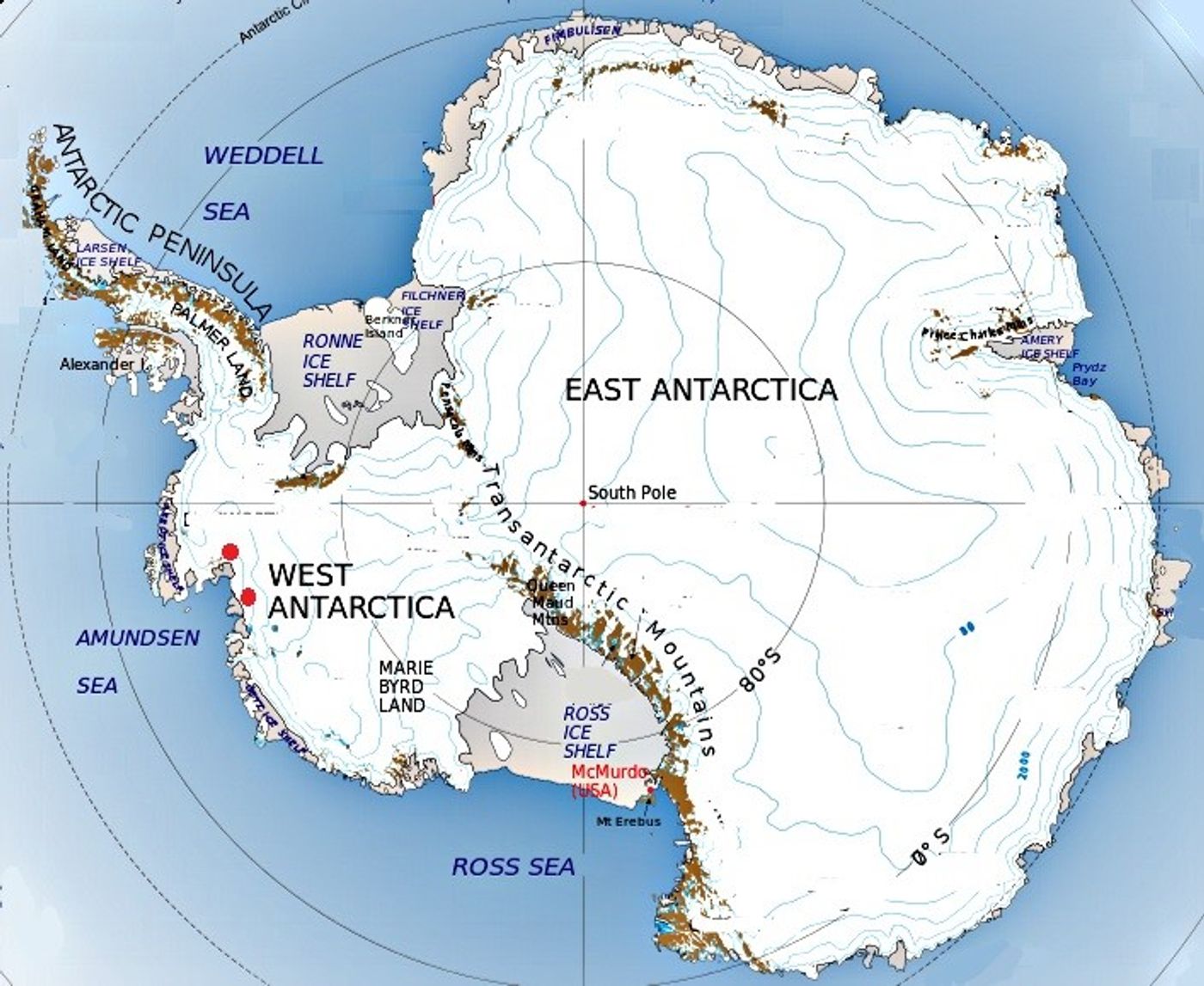What will happen to Antarctica if the West Antarctica ice sheet melts?
Ever since the Larsen C ice sheet in West Antarctica separated from the mainland several weeks ago, nerves have been high wondering what that means for the fate of Antarctica. But a recent study from Indiana University-Purdue University Indianapolis suggests that we may not need to worry, as it predicts that the central core of the East Antarctic ice sheet should remain stable even if the West Antarctic ice sheet melts.
It has been unclear recently whether the East Antarctic ice sheet is safe from climate changes. Unlike the West Antarctic ice sheet, which is grounded below sea level and thus vulnerable to changes in sea level and temperature, the East Antarctic ice sheet for a long time was thought to be stable and secure because scientists believed it laid on bedrock above sea level. Yet some studies in the last years have shown otherwise, suggesting that the perimeter of the East Antarctic ice sheet is potentially more sensitive and that the ice may have retreated and advanced much more dynamically than the scientific community previously believed. Because of these studies, the truth about the East Antarctic’s foundation was put into doubt. And to figure out the real deal, a team of scientists wandered deep into the Transarctic Mountains to look for physical evidence to determine if the East Antarctic ice sheet is indeed stable or not.
(As a side note, let’s make it clear why determining the stability of the East Antarctic ice sheet actually matters: if the East Antarctic ice sheet, which is 10 times larger than the western ice sheet, melted completely, it would cause sea levels worldwide to rise almost 200 feet. And that means a whole lot of scary implications for the planet.)
Okay, back from the digression. After much exploring in the blistering cold, the research team found the evidence they were looking for: they were able to confirm the stability of the East Antarctic ice sheet.
About 400 miles from the South Pole and 6,200 feet up at the edge of the polar plateau, the researchers discovered layers of sediment and rocks that had recorded the flow of the ice sheet. Actually finding record was like going on a wild goose hunt because glaciers moving on land often wipe out and cover up previous movements of the glacier, said Kathy Licht, an associate professor in the Department of Earth Sciences in the School of Science at IUPUI. But the record is crucial in order to understand how an ice sheet has changed over thousands of years. Now that they had this historical geologic information, the team could use computer models to extrapolate how sensitive the East Antarctic sheet might be to climate change based on past behavior patterns.
"There are models that predict that the interior of the East Antarctic ice sheet wouldn't change very much, even if the West Antarctic ice sheet was taken away," Licht said. According to these models, even if the ice sheet's perimeter retreats, its core remains stable. "It turns out that our data support those models," she commented. "It's nice to have that validation." So, although there are plenty of other melting-ice-sheet related problems to stress over, this, for now at least, is not one of them.
Sources: Science Daily, GeoScienceWorld, Quaternary Science Reviews









